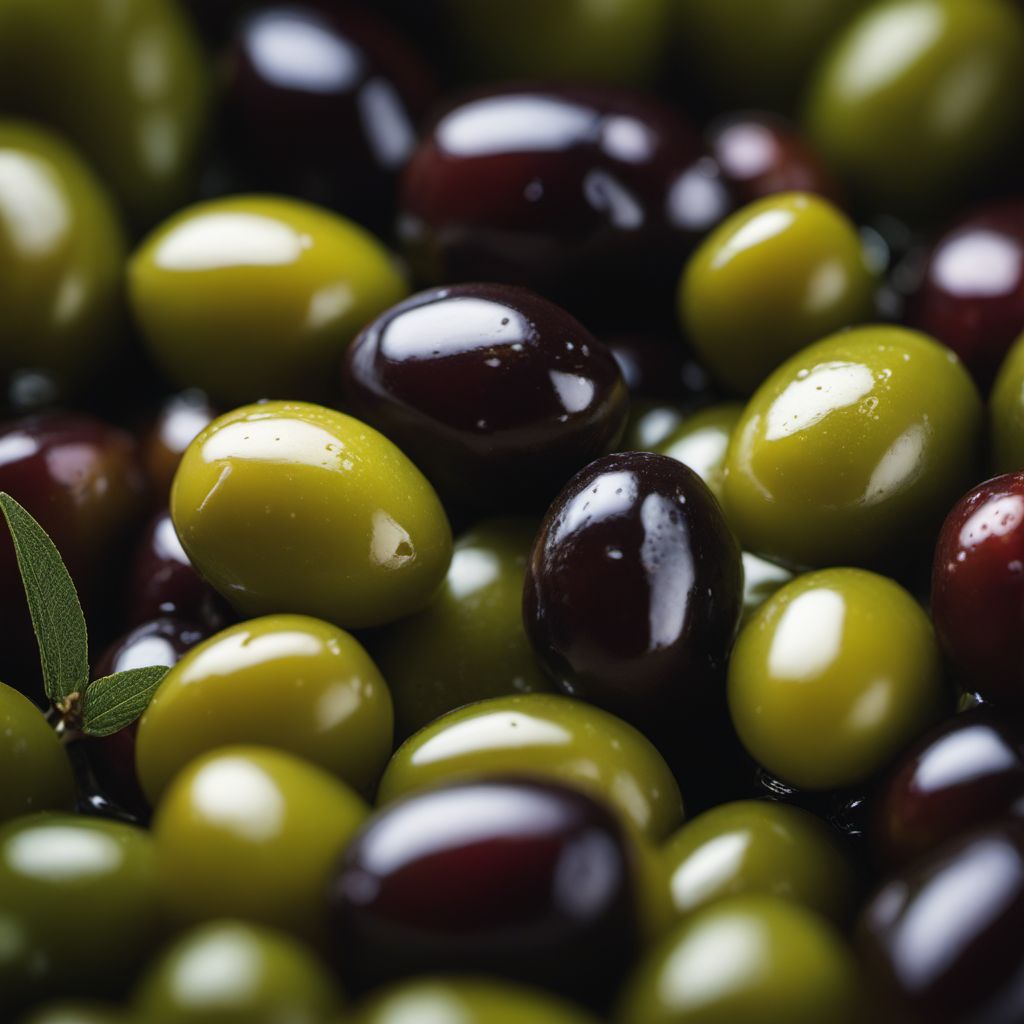
Ingredient
Olives for oil production and similar-
Liquid Gold: The Versatile Olives
Olives are small fruits with a fleshy texture and a range of colors, including green, black, and purple. They have a unique taste that can vary from mild and buttery to tangy and briny, depending on the variety and processing method. With a smooth yet slightly firm texture, olives add depth and complexity to a wide range of dishes, from salads and pasta to pizzas and tapenades.
Origins and history
Olives have a long and storied history, dating back thousands of years to ancient civilizations in the Mediterranean region. They were highly valued for their oil, which was used for cooking, lighting, and even religious ceremonies. Olives have since become a symbol of peace and prosperity in many cultures, and their cultivation has spread to various parts of the world. Today, countries like Spain, Italy, Greece, and Tunisia are renowned for their olive production.
Nutritional information
Olives are a good source of healthy monounsaturated fats, which can help reduce the risk of heart disease. They also contain antioxidants, such as vitamin E and polyphenols, that have anti-inflammatory properties. Additionally, olives provide essential minerals like iron, calcium, and copper.
How to select
When selecting olives, look for plump and firm fruits with a shiny skin. Avoid olives that appear shriveled or have soft spots, as they may be past their prime. If purchasing olives from a deli or olive bar, choose ones that are not overly salty or overly brined. For olive oil production, select olives that are specifically labeled as suitable for oil extraction.
Storage recommendations
To maintain the freshness and quality of olives, store them in a cool, dark place, such as the refrigerator. Keep them in an airtight container or resealable bag to prevent them from drying out. If you have purchased olives in brine, make sure to keep them submerged in the liquid to preserve their flavor and texture. Properly stored, olives can last for several weeks to a few months.
Preparation tips
Olives can be enjoyed in various ways, depending on their intended use. For table olives, rinse them under cold water to remove excess salt or brine before serving. They can be eaten as a standalone snack, added to salads, or used as a topping for pizzas and sandwiches. Olives are also a key ingredient in traditional Mediterranean dishes like tapenade, puttanesca sauce, and Greek salads. When using olives for oil production, they need to be crushed and pressed to extract the oil, which can then be used for cooking or as a finishing drizzle.
Culinary uses
Olives are widely used in Mediterranean cuisine, particularly in dishes from countries like Italy, Greece, Spain, and Morocco. They are a common ingredient in salads, pasta dishes, stews, and various appetizers. Olives are also popular in Middle Eastern and North African cuisines, where they are used in dishes like tagines, couscous, and mezze platters. Additionally, olives are a key component of classic cocktails like martinis and dirty martinis.
Availability
Olives are commonly available in countries around the Mediterranean region, including Spain, Italy, Greece, and Tunisia. They are also cultivated in other parts of the world, such as California in the United States and Australia. Olives can be found in most grocery stores, supermarkets, and specialty food stores.
